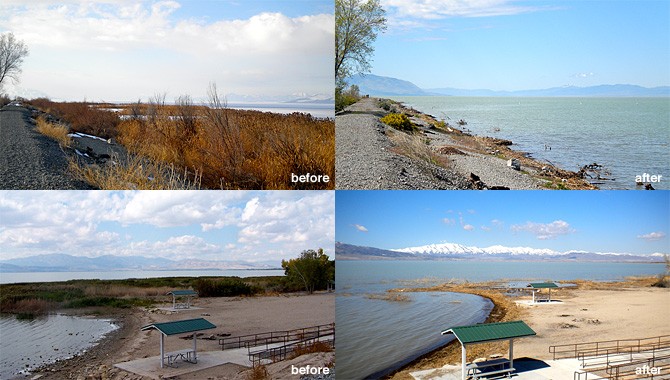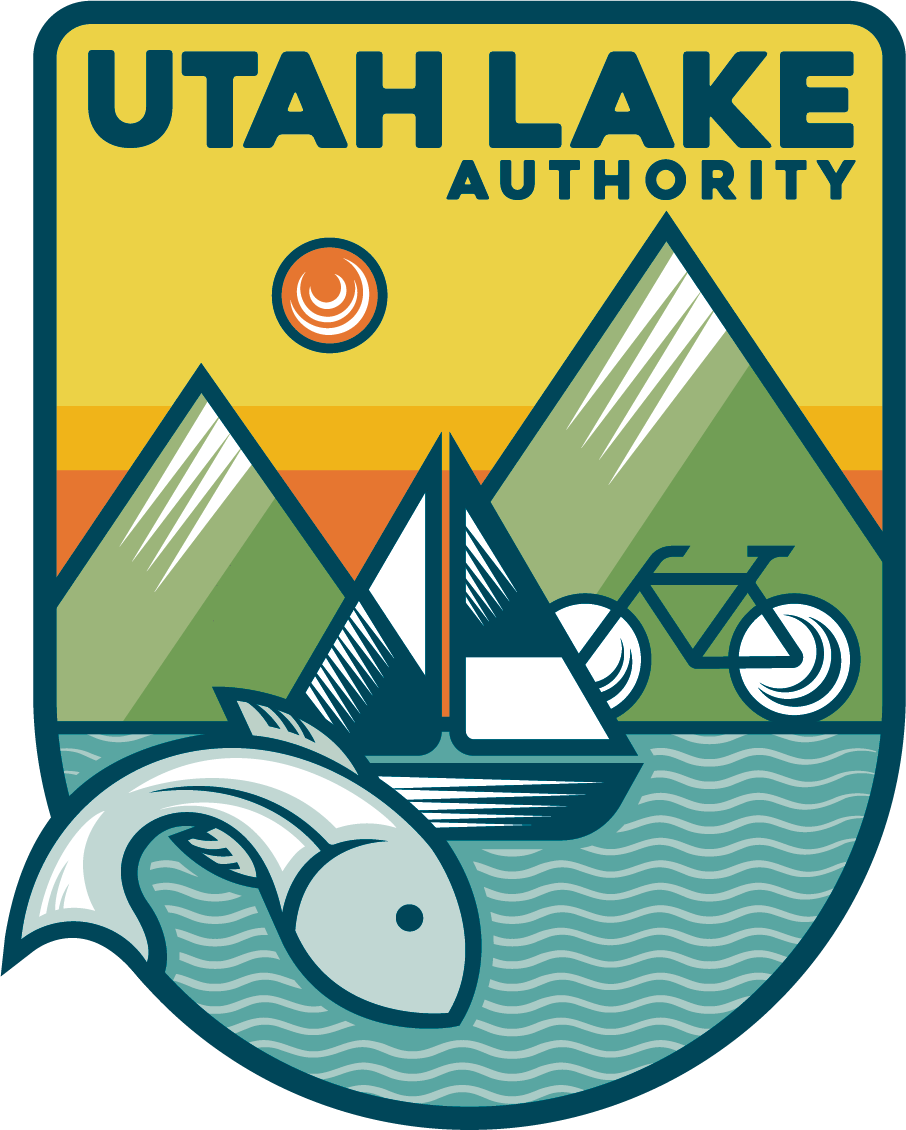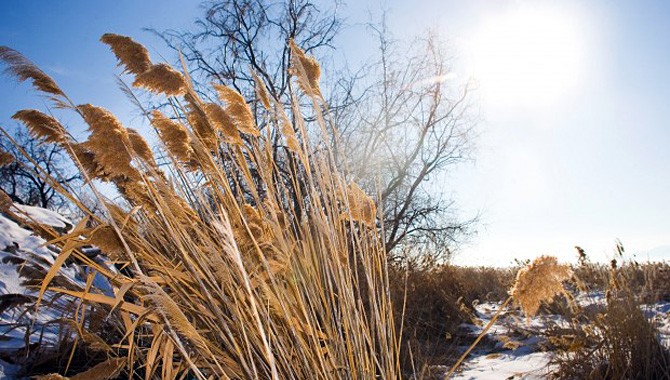It’s that time of year again! Crews from Utah County and other organizations will soon be out treating phragmites around the lake. Below are some of the most common questions that we receive about phragmites removal.
What is phragmites and why is it bad?
Answer: Utah Lake has roughly 75 miles of shoreline, which serves as a gateway for water sports, recreation, and the development of wetlands. Phragmites is an invasive reed has reduced that shoreline in recent years, making it difficult for residents to get the most out of the lake.
This wetland reed can grow up to 14 feet tall in the water — that doesn’t make for such an attractive shoreline.
But more than just a cosmetic nuisance, phragmites are also harmful to the environment. They overrun other native plants, are a natural fire hazard, and even increase the risk of disease by fostering unhealthy amounts of mosquito breeding, which explains why the phragmites was recently added to the Utah County list of noxious weeds.
How was phragmites introduced to this area?
Answer: Invasive phragmites has been a problem over much of the United States for a long time. It is relatively new to this area, becoming a problem in the late 1980s. Unfortunately, it was not recognized as a threat until much of the shoreline was already overtaken.
How it got here is unknown. Seeds could have been transported on machinery traveling through the area; someone’s grandmother may have thought it was pretty and planted it in her yard and the seeds eventually spread. Who knows. Believe it or not, much of the shoreline of Utah Lake has very nice, fine sand that once served as recreational beaches to residents of this valley, not to mention an ideal living environment for the Native Americans who lived here.
Why is this being done?
Answer: One of the goals of the Utah Lake Master Plan, which is the management plan for Utah Lake, is to control and effectively manage invasive species in and around the lake and to minimize their negative effects on the lake’s natural resources. It is our desire to return the shoreline near important recreation areas, access points, and urban interface areas to a more natural state which was prevalent just 15 years ago. We are trying to catch up and get ahead of the problem so the lake can be better utilized and enjoyed.
Who is involved?
Answer: The Utah Division of Forestry, Fire & State Lands (FFSL), which manages the shoreline and bed of Utah Lake, is working with the Utah Lake Commission, Utah County, and other lake stakeholders to restore the lake’s shoreline.
What will be happening and when will it occur?
Answer: Starting later this month, aerial treatment of phragmites by helicopter will be conducted on approximately 500 acres on the west side of Utah Lake between Eagle Park in Saratoga Springs past Pelican Point (see the bright pink area on this map, which also shows other areas treated around the lake). Aerial treatment will be on phragmites growing beyond a 50 foot buffer that crews will be hand treating. This is a safe distance to eliminate potential damage to landscaped yards and any desirable plants on the shoreline.
The aquatic-rated herbicide being used on the phragmites is called AquaNeat®. It has the same active ingredient as RoundUp®, glyphosate. This product was created specifically for aquatic environments. It is most effective when applied after the phragmites produce tassels (seed heads) and begin drawing nutrients into their root system, which can be as early as mid-summer to early fall. Due to low water conditions this year, the phragmites has matured quickly, so treatment will begin soon. The treatment regimen is one approved by FFSL, the Utah Department of Agriculture,and the Utah Division of Wildlife Resources. Similar practices are used on other lake and wetland areas around the state.
Mechanical treatment and removal of tamarisk, Russian olive and other invasive trees along the shoreline in select areas will take place in the fall and spring until funding runs out. Tree stumps of these invasive trees will also be treated with Aqua Neat® to prevent regrowth.
How long will the project last?
Answer: Each section is treated over three years. We expect 80% effective treatment of phragmites after the first treatment; 95+% after the second; and close to 100% after the third year of treatment.
Will this work?
Answer: Yes! A pilot project on 100 acres on the east side of the lake has removed approximately 98% of the phragmites after three years, and a significant amount of tamarisk and Russian olive. The pictures below show the before and after results of those efforts.

Can’t you just burn the phragmites?
Answer: No. Many think that burning is an easy way to get rid of phragmites. Burning only removes what is on the surface and does not kill the root system. It then grows back the next spring angry—more dense and expands its area as well. Herbicide treatment is necessary to kill the plant.
How will the dead phragmites be removed?
Answer: Burning is a quick way to remove the dead biomass, however it is difficult to get the required weather conditions to obtain a permit from the Division of Air Quality to burn during the late winter and early spring when the phragmites is dry enough. Air quality during those months is always a concern to the public.
We have also recently observed significant regrowth in areas where control burns were conducted, which is concerning. Significant regrowth has not occurred in other areas that were not burned.
The most cost effective way to remove it is to let it naturally decompose. This can take several years, particularly if the lake level stays low as wave action and ice floes accelerate decomposition. In our initial project on the east side of the lake, most of the phragmites broke down naturally over the three year treatment cycle. Specialized equipment has been purchased to help speed up that process in select areas by smashing it down.
How is this project funded?
Answer: A $65,000 grant through the Utah’s Watershed Restoration Initiative was received to cover the costs of the herbicide, aerial application, and mechanical removal of other invasive trees between the Utah Lake State Park and Provo Bay. A $150,000 grant was received through the Utah Department of Agriculture and Food Invasive Species Mitigation Grant. Considerable manpower and coordination is also being provided by Utah County, Utah Lake Commission, and the Utah Division of Forestry, Fire & State Lands.
How will phragmites be managed in the future?
Significant efforts are taken each year to retreat any areas that show regrowth. We specify in our grant requests that ongoing funding is needed to maintain other areas that were previously treated.


Subject: Phragmite spray in high temperatures damages surrounding plants.
I understand that the spraying occured when temps reached 85 or above in my area. The spraying started to kill some of my shrubs. I figured this out after the usu extension service diagnosed them with herbicide damage that occurs when temperatures are warm and overdrift occurs. My question is why can’t your agency spray when the weather report is for cool temperatures? And I’m sure you already know this but if it is cool when sprayed it doesn’t help because the damage can occur later if the temperatures go up even a day or more later. Please have someone contact me, I woud hate for this practice to contiunue just because someone lacks knowledge of how to apply the the phragmite spray properly. Heres a document on the subject from Purdue-https://www.extension.purdue.edu/extmedia/id/id_184_w.pdf
I stand corrected as the temperatures were between 70-80 degrees during the spray applications.
I would love for this to happen. I would also love for them to do whatever allowed the other side of the pond fill up in 2011. I was really nice having both sides full as it provided for a lot of wildlife. It was beautiful.
Yes! There are many birders who come to this area and many runners who use the trail. Most of the time, the beautiful water view is blocked by the phragmites. It would be great to get rid of them!
Question: I am VERY familiar with all aspects of phragmites. Can you give me a ballpark estimate — realize issues around depth of rhizomes…. – of eradication once by mechanical means (using latest technology/excavation equipment) vs. one time cutting and pulling for one square acre of phragmites? And does your estimate for former include/exclude cost of gathering, drying and disposing of excavated phragmites? Ballpark !! Thank you